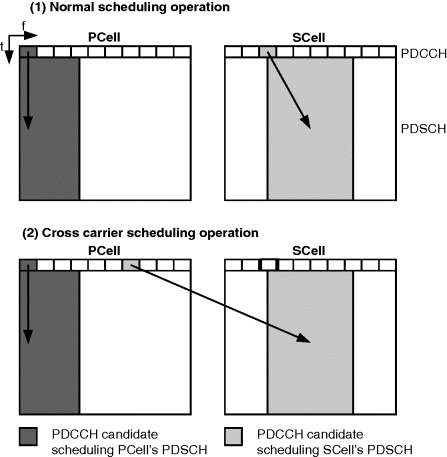4.4 Physical Layer Impact from Carrier Aggregation
In the physical layer the individual carrier is unchanged as far as a Release 8 UE is concerned. There are two modes which associate the Physical Downlink Control Channel (PDCCH) with the corresponding scheduled Physical Downlink Data Shared Channel (PDSCH) or the corresponding scheduled Physical Uplink Data Shared Channel (PUSCH):
These two modes are illustrated in Figure 4.11.
Figure 4.11 Normal and cross carrier scheduling operations.

For the support of carrier aggregation with cross carrier scheduling, the Physical Downlink Control Channel (PDCCH) content is modified by adding to the PDCCH formats the Carrier Information Field (CIF) to allow indication for which of the downlink carriers the user resource allocation was intended. The general design principle is to enable up to five component carriers to be used but the real case for the first deployments (including performance requirements and band combinations) is two carriers. Use of cross carrier scheduling allows more dynamic use of the PDCCH resources as now also the PDCCH signalling ...
Get LTE Advanced: 3GPP Solution for IMT-Advanced now with the O’Reilly learning platform.
O’Reilly members experience books, live events, courses curated by job role, and more from O’Reilly and nearly 200 top publishers.

